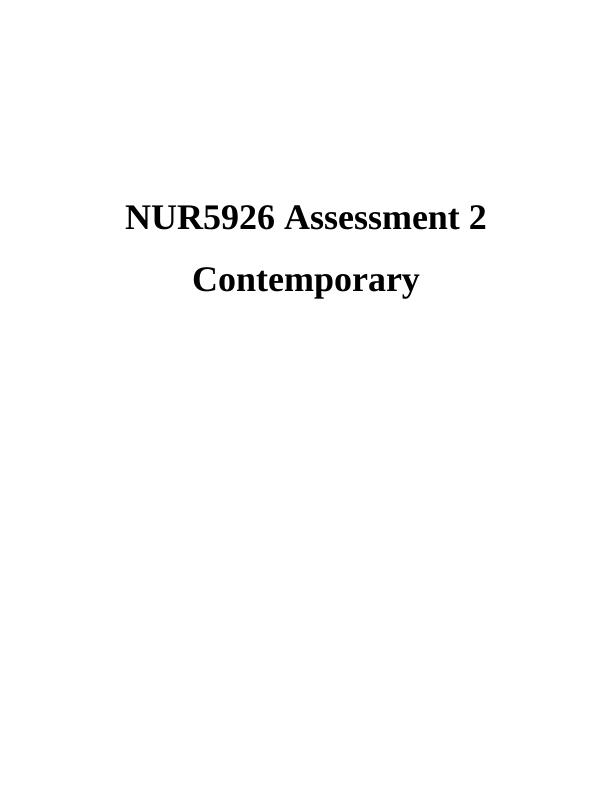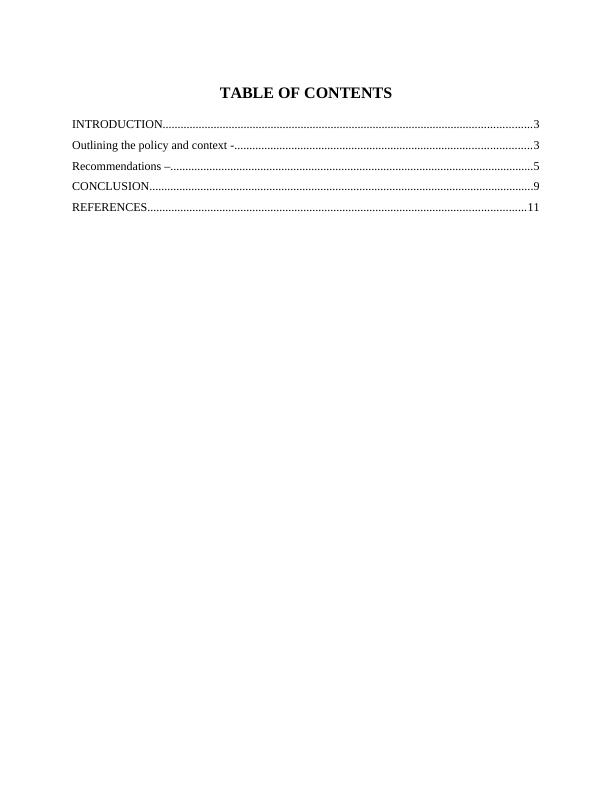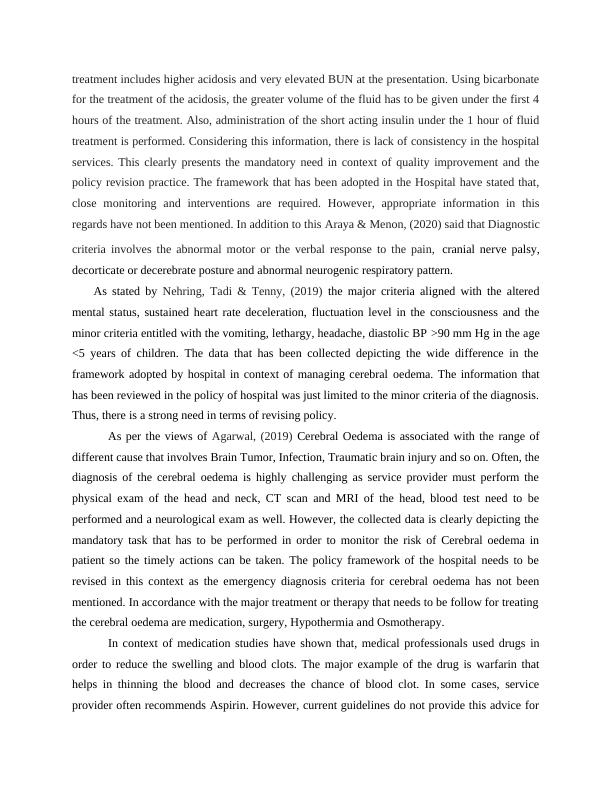Managing Cerebral Oedema in Children with Paediatric Diabetic Ketoacidosis: A Policy Review and Recommendations
12 Pages3946 Words477 Views
Added on 2023-06-10
About This Document
This assignment discusses the policy from a major hospital in Australia which has adopted the framework for managing Cerebral Oedema in children due to Paediatric Diabetic Ketoacidosis. It also provides recommendations for future policy.
Managing Cerebral Oedema in Children with Paediatric Diabetic Ketoacidosis: A Policy Review and Recommendations
Added on 2023-06-10
ShareRelated Documents
End of preview
Want to access all the pages? Upload your documents or become a member.
Diabetic Ketoacidosis (DKA) and Cerebral Oedema
|14
|3817
|251
DKA Management Research Paper 2022
|4
|618
|18
Mrs. Brown’s Case Study: Understanding Diabetes Mellitus, DKA, and HHS
|8
|1537
|500
Evaluation of Diabetic Ketoacidosis Treatment Protocols: A Literature Review
|4
|700
|62
Diabetes Assessment and Management Plan
|11
|3007
|443
Impact of DKA on Pediatric Patients
|13
|3136
|42




